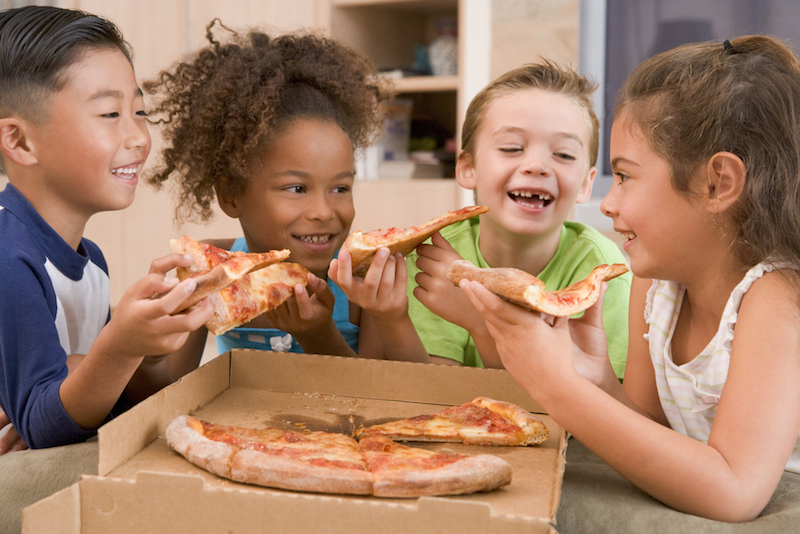Pizza Prescription: Kids Should Eat Less, Researchers Say

Kids in the United States eat so much pizza that some researchers now argue the food should join the ranks of sugary drinks and fast foods — increasingly decried in recent years for the toll they take on health.
In a new study, the researchers found that pizza is a large source of calories, saturated fat and salt in kids' diets.
Kids should not eat more than one or two slices of pizza for a meal, and should pair that with salad, rather than with another high-calorie food, the researchers concluded.
"Parents should aim to curb pizza consumption, particularly as a snack where it was shown to have the largest adverse impact on children's [calorie] intake, and they should put their pizza dollars toward healthier brands," said study co-author Lisa Powel, director of the Illinois Prevention Research Center.
Pizza has become a matter of focus in recent years for researchers who look at the meals children eat, rather than the individual nutrients within them. Studies have found children eat pizza more frequently than adults, and that along with desserts such as cakes and cookies, pizza is one of the foods that are the greatest sources of calories for children. Children consume an average of 136 calories per day from pizza, the new study found. [10 Ways to Promote Kids'Healthy Eating Habits]
For the new study, Powel and her colleagues looked at questionnaires about the diets of children and teens ages 2 to 19, that were completed every two years between 2003 and 2010.
The researchers found that the number of calories children consumed from pizza decreased 25 percent between 2003 and 2010, which is good news, they said. But the food remains a common part of children's diets: On any given day, about 20 percent of children and teens eat pizza.
Get the world’s most fascinating discoveries delivered straight to your inbox.
What's more, on the days when children eat pizza, they end up consuming more saturated fat, more salt, and more calories overall. On such days, teens consume an average of 230 extra calories, and younger children consume an average of 84 extra calories, compared with the days on which kids don't eat pizza.
These excess calorie intakes are similar to what occurs when children eat fast foods, according to the study, published today (Jan. 19) in the journal Pediatrics.
"Given that pizza remains a highly prevalent part of children's diet, we need to make 'healthy' pizza the norm," Powel said. To make pizza healthier, food producers and restaurants should reduce its saturated fat and salt, and increase its whole grain content, she said.
The researchers recommend that doctors and nutrition counselors directly discuss pizza consumption with parents during nutrition counseling. Dietary counseling may be more effective if doctors focus on specific foods, rather than overall nutrients, the researchers said in their study.
Whether or not pizza deserves to be singled out as an unhealthy food, the study highlights a larger issue with the modern American lifestyle, said Alexis Tindall, a clinical dietitian with the Center for Healthy Weight & Nutrition at Nationwide Children's Hospital in Columbus, Ohio.
Many foods are eaten too frequently, and in portions that are too large, said Tindall, who was not involved in the new research. To address the problem, people don't have to swear off eating all pizza, but instead, they can eat smaller portions and healthier versions of it, she said.
"Make it at home, instead of ordering it out where you don't have any control over how it's made," Tindall said. "When we make it at home we can choose healthier toppings, increase the vegetables and lean proteins, and put less cheese…Pizza doesn't have to be just pepperoni and cheese."
Email Bahar Gholipour. Follow Live Science @livescience, Facebook & Google+. Originally published on Live Science.



